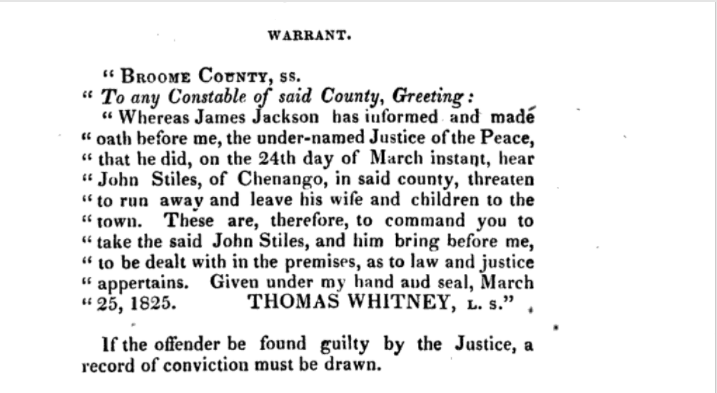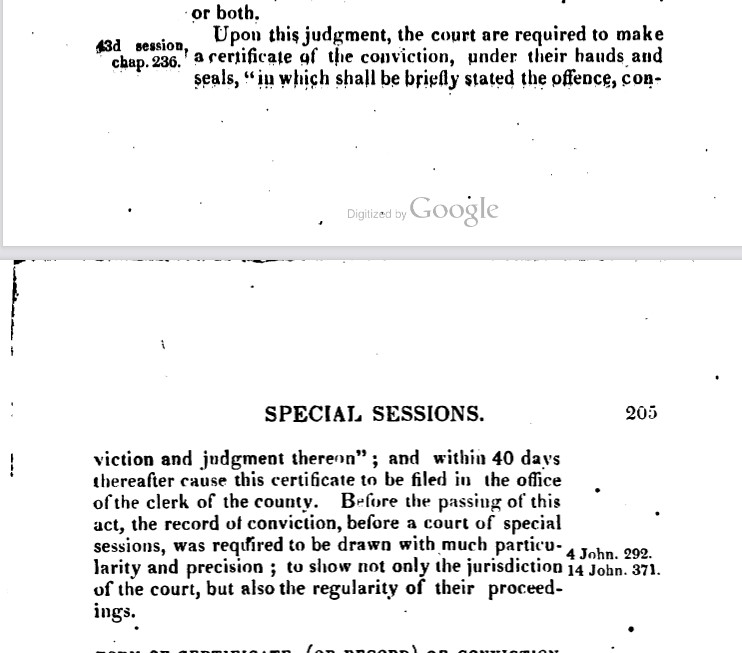Thomas Glasby Waterman in The Justice's Manual (1825) writes that if a defendant is found guilty a record of conviction must be produced by the judge.
- Type
- Book
- Source
- Thomas Glasby Waterman Non-LDS
- Hearsay
- Secondary
- Reference
Thomas Glasby Waterman, The Justice’s Manual: Or, A Summary of the Powers and Duties of Justices of the Peace in the State of New York; Containing a Variety of Practical Forms, Adapted to Cases Civil and Criminal (Binghamton: Morgan & Canoll, 1825), 117, 204-5
- Scribe/Publisher
- Morgan & Canoll
- People
- Thomas Glasby Waterman
- Audience
- Reading Public
- Transcription
If the offender be found guilty by the Justice, a record of conviction must be drawn.
. . .
Upon this judgment, the court are required to make a certificate of the conviction, under their hands and seals, "in which shall be briefly stated the offence, conviction and judgment thereon"; and within 40 days thereafter cause this certificate to be filed in the office of the clerk of the county. Before the passing of this act, the record of conviction, before a court of special sessions, was required to be drawn with much particularity and precision; to show not only the jurisdiction of the court, but also the regularity of their proceedings.
- BHR Staff Commentary
According to New York law of the time of Joseph Smith's 1826 hearing, if there was a conviction, there must be drawn up a certificate of conviction within 40 days of the conviction.
- Citations in Mormonr Qnas
The B. H. Roberts Foundation is not owned by, operated by, or affiliated with the Church of Jesus Christ of Latter-day Saints.


